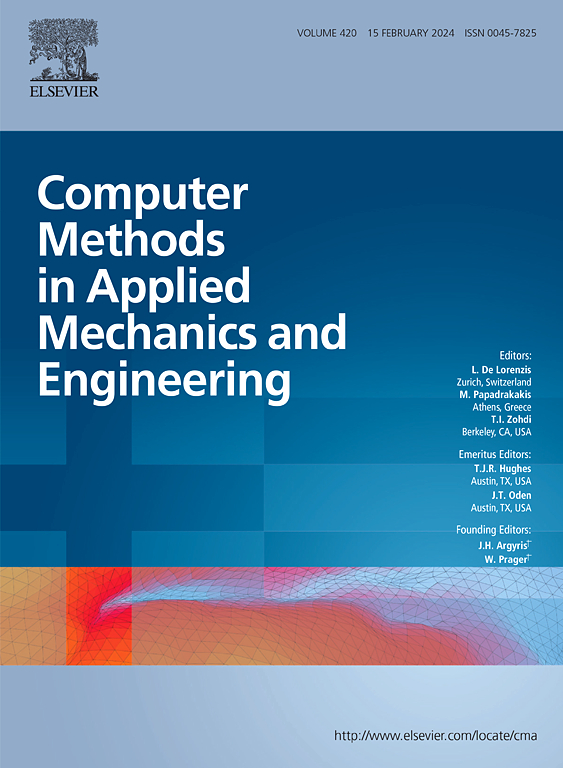Data-driven elastoplastic constitutive modelling with physics-informed RNNs using the Virtual Fields Method for indirect training
IF 6.9
1区 工程技术
Q1 ENGINEERING, MULTIDISCIPLINARY
Computer Methods in Applied Mechanics and Engineering
Pub Date : 2025-03-26
DOI:10.1016/j.cma.2025.117935
引用次数: 0
Abstract
The increasing demand for accurate material behaviour data in engineering simulations has exposed the limitations of traditional constitutive models. Although recent advances in full-field measurement techniques provide more detailed material characterization, conventional approaches still heavily rely on explicit assumptions and labour-intensive experimentation. This paper revisits the indirect training methodology introduced by the authors [1], which integrates Recurrent Neural Networks (RNNs) with Gated-Recurrent Units (GRUs) and the Virtual Fields Method (VFM) to model material behaviour without labelled data. The earlier study demonstrated the feasibility of training a GRU-based RNN using only global force and strain data through the VFM. Building on those findings, this work presents a more robust approach featuring an improved network architecture, with residual connections to enhance gradient flow and training stability, while also incorporating physics-based constraints. Extensive hyperparameter tuning was conducted to optimize the model and a sensitivity analysis was performed to assess the impact of the virtual fields on the accuracy and training dynamics. The models were validated using additional heterogeneous mechanical tests and the Reconstructed Axial Force Ratio (RAFR), as a key performance indicator, to further assess the physical correctness. The results show enhanced predictive accuracy and improved force reconstruction when larger sets of virtual fields are employed. Additionally, normalizing the VFM loss contributed to more consistent predictions and force reconstruction across all time stages. Stress contour plots further confirm the model’s ability to accurately predict stress distributions, which are in good agreement with the reference, with low median and average absolute errors.
求助全文
约1分钟内获得全文
求助全文
来源期刊
CiteScore
12.70
自引率
15.30%
发文量
719
审稿时长
44 days
期刊介绍:
Computer Methods in Applied Mechanics and Engineering stands as a cornerstone in the realm of computational science and engineering. With a history spanning over five decades, the journal has been a key platform for disseminating papers on advanced mathematical modeling and numerical solutions. Interdisciplinary in nature, these contributions encompass mechanics, mathematics, computer science, and various scientific disciplines. The journal welcomes a broad range of computational methods addressing the simulation, analysis, and design of complex physical problems, making it a vital resource for researchers in the field.

 求助内容:
求助内容: 应助结果提醒方式:
应助结果提醒方式:


